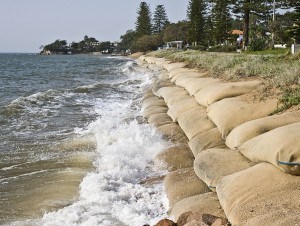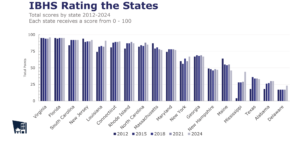 Rising sea levels in the coming years will create heightened risk of severe economic damage from hurricane-related flood in U.S. coastal cities, RMS asserted in a new report.
Rising sea levels in the coming years will create heightened risk of severe economic damage from hurricane-related flood in U.S. coastal cities, RMS asserted in a new report.
The catastrophe modeling firm looked at Baltimore, Boston, Miami, New Orleans, New York and Tampa to come up with its calculations, and the findings are stark. RMS believes that due to a rise in sea-level, storm surge will produce more than half of the economic losses that result from hurricane in the U.S. across hurricane-exposed states by 2100.
For example, RMS determined that economic storm surge losses at the 100-year return period for New York would be $9 billion today, but that figure more than doubles to $23 billion by 2100. (The estimate for both assumes there is a one percent chance of at least that amount of losses occurring in a given year.)
Consider this comparison: Superstorm Sandy caused more than $15 billion in losses in 2012, from storm surge in New York.
By the same token, RMS found large hikes in 100-year return period surge losses in both Tampa and Miami. For Tampa, there is a one percent chance that the city will face at least $17 billion in economic storm surge losses this year. But that number jumps to $25 billion in 2100.
Numbers also jump drastically in the other modeled cities. For Baltimore, the 100-year return period storm surge losses jump from $126 million today to $487 million in 2100, according to RMS modeling. In Boston, those predicted losses soar from $476 million today to $1.5 billion in 2100. In New Orleans there is a similar drastic change, from $411 million today to $836 million in 2100.
RMS noted that the sea-level rise near New Orleans is expected to surpass 4.3 feet by 2100, boosting the chance of catastrophic citywide flooding by more than four times unless officials continue to improve flood defenses and raise them by an equivalent height. However, other cities such as Miami, New York and Tampa face greater risk of a storm surge causing at least $15 billion in economic loss. That’s because of major improvements in flood defenses and reduce exposures in New Orleans in the wake of Hurricane Katrina a decade ago, and the $41 billion in property and casualty insurance losses it caused.
At the same time, RMS said it sees Baltimore and Boston having a less than 1-in-1 million chance of experiencing a storm surge loss greater than $15 billion over the next 100 years. But risks of this level of loss will grow considerably in Miami, New Orleans, New York and Tampa, according to the modeling.
RMS sees Miami, New Orleans, New York and Tampa as currently having a 1-in-123, 1-in-440, 1-in-200 and 1-in-80 chance, respectively, of dealing with a storm surge loss greater than $15 billion. By 2100, that grows to 1-in-30, 1-in-315, 1-in-45 and 1-in-30 by 2100, RMS said its modeling shows.
Source: RMS





















 Uncertainty Keeps Prices Up; No Prior-Year Loss Development: Travelers
Uncertainty Keeps Prices Up; No Prior-Year Loss Development: Travelers  Study: U.S. Companies Facing Class Actions at Highest Level in 13 Years
Study: U.S. Companies Facing Class Actions at Highest Level in 13 Years  Cat Losses, Auto and HO Price Hikes Continue at Allstate
Cat Losses, Auto and HO Price Hikes Continue at Allstate  P/C Insurance Execs, Underwriters Out of Sync on Advanced Tech
P/C Insurance Execs, Underwriters Out of Sync on Advanced Tech 










